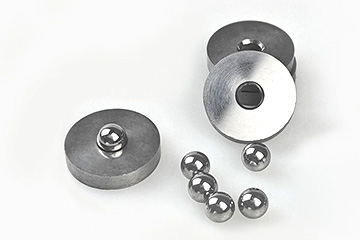Is Grinding Carbide Dangerous? Safety Guide & Risks
Grinding carbide safely explained: health risks, tungsten carbide dust hazards, proper PPE, and professional grinding techniques. Learn safety protocols.
Grinding carbide, a common industrial process, grinding carbide is not dangerous if done by professionals. For individuals without operational experience, training in the operation of grinding machines is necessary, as any mechanical operation has certain risks. Here’s a detailed look at the safety risks associated with grinding carbide and the necessary precautionary measures.
I. Safety Risks of Grinding Carbide
- Mechanical Failures:
- Grinding machines can experience malfunctions like transmission system failures, which might lead to injuries or damage if not promptly addressed.
- Electrical Shock:
- There is a risk of electrical shock from malfunctioning protective devices or damaged cables, which are common in environments with heavy machinery.
- Noise and Vibration:
- Prolonged exposure to high levels of noise and vibration can lead to hearing loss and other physical health issues.
- Swarf and Coolant Splashes:
- The debris and coolant ejected during grinding can harm the respiratory system, skin, and eyes if proper protective measures are not in place.
- Insufficient Protection:
- Operators without adequate safety gear like safety glasses, earplugs, and gloves are at increased risk of various injuries.
II. Safety Precautionary Measures
- Personal Protection:
- Operators should always wear personal protective equipment (PPE), including safety glasses, earplugs, and gloves, to mitigate injury risks.
- Mechanical and Electrical Safety:
- Regular Inspection and Maintenance: Routine checks and maintenance of the machine’s transmission and electrical systems are crucial to ensure safe operation.
- Use of Qualified Materials: Only grinding wheels and other materials that meet safety standards should be used to avoid the risk of malfunctions and accidents.
- Work Environment Management:
- Noise and Vibration Control: Implementing noise reduction and vibration damping measures, such as anti-vibration pads and silencers, can protect operators from long-term health issues.
- Cleaning and Maintenance: Regular cleaning to remove swarf and coolant helps minimize slip and fire hazards. Ensure that open flames are not used near grinding operations.
- Emergency Preparedness:
- Training and Education: Comprehensive safety training for all operators is essential. This should cover the operation of grinding machines, emergency response techniques, and proper use of safety equipment.

Low-price custom solutions. Our factory business includes designing, developing, and manufacturing powder metallurgy moulds, carbide parts, powder injection moulds, stamping toolings and precision mould parts.
WhatsApp: +86 186 3895 1317 Email: [email protected]
Conclusion
While grinding carbide comes with its set of risks, these can be effectively managed with the right safety measures and training. Ensuring that all operators are well-informed and equipped with appropriate PPE will help prevent accidents and maintain a safe working environment.
Interactive Segment:
Have you worked with grinding carbide? Share your experiences and the safety techniques you employ in the comments below. Your insights can help others improve their safety practices and foster a safer industrial environment.









